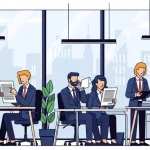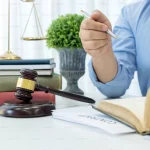5 Things You Need for Your Slip & Fall Injury Claim
There is an important difference between negligence and clumsiness. A legitimate grievance should result in compensation, but it can be difficult to prove. When you have suffered an injury as a result of someone else’s mistakes, you need to make sure that your case is properly presented. Seeking damages as the plaintiff puts the burden of showing evidence on you. Below are five essential items you will need to increase the odds of collecting the money you are owed.
Photographs
In many accident cases, the evidence can literally evaporate. Ice on walkways and spilled chemicals do not simply remain in place, waiting for review by a judge. You need to be able to present an accurate account of what happened. Fortunately, the prevalence of cell phone technology makes it is easy to snap a few photos of the scene. If you are unable to do so yourself, ask a friend or family member to take pictures for you. These pictures should be of any standing water, oil, ice, or other substances that contributed to your fall.
Maintenance Records
The managers or owners of the facility where you fell are responsible for its maintenance. There is likely an established policy and manual for cleaning and repair. These documents can be obtained and evaluated. If it can be shown that the responsible parties did not follow written procedures, your chances of winning are improved.
Zoning Codes and Ordinances
The city or county government have specific rules about the condition of walkways, steps, and railings. The size, placement, and condition of these structures are all important to your claim. If it can be determined that the railing is insufficient or that the size of rise on a set of stairs is too high, you may win. These codes and ordinances serve as a benchmark for evaluating the conditions of the environment, so they are essential to have.
Professional Inspection Report
An inspection by a professional construction company is worth the money. These reports will clearly indicate the measurements of the structures responsible for your injury. Establishing that the area is not up to code supports the argument that you are not at fault for your injury. Do not trust your own measurements. It is too easy for your opposition to demonstrate faulty measuring techniques or biased results. Get an appraisal from an expert to use in your trial.
Investigation Results
Police are required to document incidents and file complete and accurate reports. These reports clear up ambiguous statements made by witnesses and help prevent wandering conclusions. Make sure that you obtain a copy of any investigative report. An insurance adjustor’s report is also a good tool to have for the same reason.
Injury claims are often very subjective, and it is the minute details that make the difference. No one should expect to receive compensation for his or her own clumsiness, but a legitimate claim should be fairly evaluated and rewarded. If you have suffered an injury as a result of a fall or want assistance deciding how best to proceed, contact an attorney to get the help you need.
More to Read:
Previous Posts:







